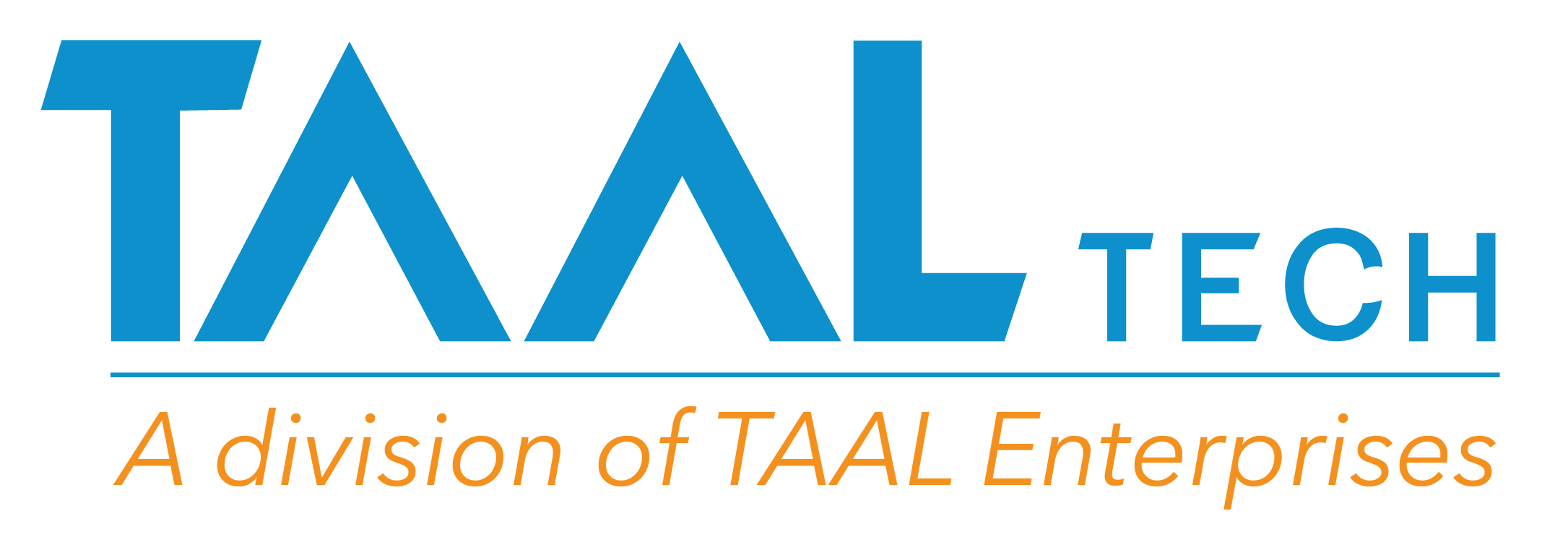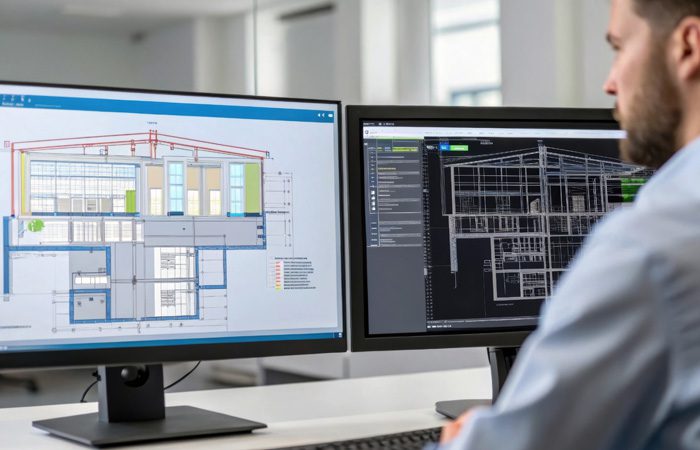
Key Challenges and Solutions in Large-Scale Plant Engineering Projects
Plant engineering projects, especially large-scale ones, are highly complex, requiring precise coordination of numerous technical, operational, and logistical aspects. Whether it’s a chemical plant, a power generation facility, or an industrial manufacturing setup, these projects face significant challenges throughout their lifecycle.
This blog explores the key challenges faced in large-scale plant engineering projects and offers potential solutions. We will also examine how partnering with an engineering services company can provide the necessary expertise and resources to overcome these challenges.
- Complex Project Management
Challenge:
Managing large-scale plant engineering projects involves multiple stakeholders, including designers, engineers, suppliers, and contractors. The complexity of coordinating different teams, managing timelines, and ensuring adherence to design and regulatory standards can quickly spiral into chaos. Delays in the delivery of equipment or failure to meet construction deadlines can have cascading effects, leading to cost overruns and operational setbacks.
Solution:
Implementing robust project management systems is crucial. Adopting digital project management tools and Building Information Modeling (BIM) can enhance communication, improve coordination, and provide real-time tracking of tasks. These tools allow for better planning, resource allocation, and decision-making based on accurate data.
Project managers should also use risk mitigation strategies such as contingency planning and the involvement of cross-functional teams early in the project lifecycle to address potential bottlenecks before they escalate.
- Design and Integration Complexity
Challenge:
Large-scale plants often involve the integration of various subsystems—such as HVAC, power generation, and control systems—each with different technologies and design requirements. Ensuring these subsystems work together seamlessly is a significant challenge. Inadequate design can lead to costly retrofits, rework, or operational inefficiencies later on.
Solution:
Integrated design approaches, such as modular plant design, can help in resolving this complexity. Modular designs allow for pre-assembly of plant components offsite, reducing construction time and improving overall quality. Using advanced simulation software during the design phase can also help in testing the functionality of integrated systems before they are implemented.
Additionally, implementing Digital Twins—virtual replicas of physical assets—enables engineers to monitor performance, test different operational scenarios, and make proactive design adjustments in real-time.
- Regulatory and Compliance Issues
Challenge:
Large-scale plant projects must comply with a wide range of regulations, including safety standards, environmental policies, and industry-specific guidelines. These regulations vary significantly across regions and industries, and failing to meet them can lead to costly fines, project shutdowns, or operational delays.
Solution:
A strong understanding of local, national, and international regulations is essential for successful project execution. Hiring compliance experts or engaging with regulatory authorities early in the design and planning stages can help ensure adherence to regulations. Moreover, the use of automated compliance tracking tools can streamline the documentation and reporting processes, making it easier to stay compliant throughout the project lifecycle.
Regular audits and inspections should be built into the project schedule to ensure continuous compliance with evolving regulations. Implementing best practices for sustainability and energy efficiency can also help in adhering to environmental standards.
- Supply Chain and Procurement Challenges
Challenge:
Large-scale projects require the procurement of complex equipment and materials from multiple suppliers. Any delays or disruptions in the supply chain—due to factors such as geopolitical instability, natural disasters, or supplier issues—can significantly impact project timelines and costs.
Solution:
Building a resilient supply chain is crucial. This involves diversifying suppliers, maintaining strong relationships with key vendors, and keeping an inventory of critical components. Digital procurement platforms can help in tracking orders, managing supplier performance, and ensuring timely delivery of materials.
In addition, adopting Just-in-Time (JIT) inventory practices allows for materials to be delivered as needed, reducing storage costs and improving cash flow. However, JIT should be balanced with risk mitigation strategies to avoid shortages or delays in case of unforeseen supply chain disruptions.
- Skilled Labor Shortage
Challenge:
A shortage of skilled labor—particularly in engineering, construction, and technical roles—is a major hurdle for large-scale plant engineering projects. This is often exacerbated by the need for specialized expertise in areas such as automation, process control, and advanced manufacturing technologies.
Solution:
Investing in training and upskilling programs for the existing workforce is an effective solution. In addition, leveraging digital technologies such as augmented reality (AR) and virtual reality (VR) for remote training and supervision can help in addressing this gap.
Another approach is to collaborate with third-party engineering service providers who have access to a diverse pool of skilled engineers, designers, and technical experts. These partnerships ensure that the necessary expertise is always available, regardless of internal resource limitations.
- Safety and Risk Management
Challenge:
Ensuring the safety of workers and minimizing operational risks are critical challenges in large-scale plant engineering. The complexity of modern plants, combined with hazardous working environments, makes safety management a top priority. Failing to maintain high safety standards can lead to accidents, project delays, and legal liabilities.
Solution:
Adopting a safety-first approach is essential. Implementing advanced safety management systems (SMS) that include real-time monitoring, predictive analytics, and automated safety protocols can reduce the likelihood of accidents. Using sensors and IoT devices can help track equipment health and detect potential issues before they escalate.
Regular safety training programs, emergency drills, and compliance with Occupational Safety and Health Administration (OSHA) or equivalent standards should be mandatory for all project personnel. Additionally, conducting thorough risk assessments at each project stage can help in identifying and mitigating potential safety hazards.
- Technological Integration
Challenge:
The rapid pace of technological advancement presents both opportunities and challenges for large-scale plant engineering projects. Integrating new technologies—such as artificial intelligence (AI), machine learning (ML), and the Industrial Internet of Things (IIoT)—into legacy systems can be difficult, often requiring significant adjustments to existing infrastructure.
Solution:
Adopting a phased approach to technological integration can minimize disruption and ensure smoother transitions. Conducting a thorough assessment of existing systems and identifying areas that would benefit most from digital upgrades is a key first step.
Cloud-based platforms and open-source technologies can help facilitate integration, allowing different systems to communicate seamlessly. Partnering with technology providers and engineering firms that specialize in digital transformation can also ensure that the right technologies are chosen and implemented effectively.
How an Engineering Services Company Can Help You?
Large-scale plant engineering projects require specialized expertise across a wide range of disciplines. Engineering services companies can provide invaluable support in addressing the challenges discussed above. Here’s how they can help:
Access to Expertise: Engineering services firms bring in specialized knowledge and experience in areas such as design, project management, automation, and safety. Their engineers are well-versed in the latest industry standards and best practices, ensuring the project is executed efficiently and compliantly.
Resource Flexibility: These companies can provide skilled labor and technical experts on-demand, mitigating the risk of resource shortages. Whether it’s project managers, design engineers, or automation specialists, partnering with an engineering services firm ensures that your project has the right people with the right skills.
Cutting-Edge Technology: Engineering firms often have access to the latest technology, including advanced simulation tools, digital twins, and automation systems. Their expertise in integrating these technologies into your project can improve efficiency, reduce costs, and enhance overall project outcomes.
Cost and Time Efficiency: By outsourcing critical aspects of the project to an engineering services provider, you can accelerate timelines and reduce overhead costs. These firms have well-established processes and frameworks that allow them to execute projects more efficiently.
Large-scale plant engineering projects face numerous challenges, from complex project management and regulatory compliance to supply chain disruptions and labor shortages. By implementing the right strategies—such as digital project management tools, modular design, and safety management systems—many of these challenges can be overcome.
Additionally, partnering with an engineering services company provides access to specialized expertise, cutting-edge technologies, and the flexibility needed to ensure successful project execution.
Today, leveraging external engineering expertise is not just a cost-saving measure but a strategic advantage in achieving long-term operational excellence.
The Industrial Internet of Things (IIoT) is transforming the industrial landscape by connecting machines, sensors, and devices, enabling real-time data collection and analysis. This connectivity brings unprecedented efficiency, productivity, and innovation opportunities. However, it also introduces significant cybersecurity risks. As industrial systems become increasingly interconnected, they become more vulnerable to cyber threats, making the security of IIoT systems paramount.
In this blog, we will explore the importance of securing IIoT systems and provide strategies to mitigate cyber threats, addressing the concerns of clients worried about data breaches and security risks.
The Importance of Securing IIoT Systems
- Protecting Critical Infrastructure
IIoT systems are often integrated into critical infrastructure, such as power grids, water treatment facilities, and transportation systems. A cyber attack on these systems can have catastrophic consequences, leading to service disruptions, safety hazards, and economic losses. Ensuring the security of IIoT systems is essential to protect public safety and maintain the continuity of essential services.
- Safeguarding Sensitive Data
IIoT systems collect vast amounts of data, including operational information, production metrics, and even employee and customer data. This data is valuable to cybercriminals who can exploit it for financial gain or industrial espionage. Securing IIoT systems helps protect sensitive data from unauthorized access and theft.
- Maintaining Operational Continuity
Cyber attacks can disrupt industrial operations, leading to downtime and productivity losses. For instance, a ransomware attack can lock down critical systems, forcing companies to halt production until the issue is resolved. By securing IIoT systems, companies can minimize the risk of operational disruptions and ensure business continuity.
- Compliance with Regulations
Many industries are subject to strict regulations regarding data protection and cybersecurity. Non-compliance can result in hefty fines, legal penalties, and reputational damage. Implementing robust IIoT security measures helps companies comply with regulatory requirements and avoid potential legal and financial repercussions.
Strategies to Mitigate Cyber Threats in IIoT Systems
- Implementing Strong Authentication and Access Controls
One of the most effective ways to secure IIoT systems is by implementing strong authentication and access controls. This includes using multi-factor authentication (MFA) to verify user identities and restricting access to sensitive systems and data based on the principle of least privilege. Role-based access control (RBAC) can help ensure that users only have access to the resources they need for their specific roles.
- Encrypting Data at Rest and in Transit
Data encryption is crucial for protecting sensitive information from unauthorized access and tampering. Encrypting data at rest ensures that even if an attacker gains physical access to storage devices, they cannot read the data without the encryption key. Encrypting data in transit protects it from interception and eavesdropping as it moves between devices and systems. Implementing end-to-end encryption ensures that data remains secure throughout its lifecycle.
- Regularly Updating and Patching Systems
Keeping IIoT devices and systems up to date with the latest software patches and security updates is essential for protecting against known vulnerabilities. Cybercriminals often exploit unpatched vulnerabilities to gain access to systems and networks. Regularly updating and patching systems helps close these security gaps and reduces the risk of exploitation.
- Segmenting Networks
Network segmentation involves dividing a network into smaller, isolated segments to limit the spread of cyber threats. By segmenting IIoT networks, companies can contain the impact of a potential breach and prevent attackers from moving laterally across the network. Implementing firewalls, virtual local area networks (VLANs), and intrusion detection systems (IDS) can help enforce network segmentation and enhance security.
- Monitoring and Analyzing Network Traffic
Continuous monitoring and analysis of network traffic can help detect and respond to cyber threats in real time. Implementing intrusion detection and prevention systems (IDPS) can alert security teams to suspicious activity and block malicious traffic.
Advanced threat detection tools, such as Security Information and Event Management (SIEM) systems, can provide comprehensive visibility into network activity and facilitate rapid incident response.
- Implementing Robust Endpoint Security
IIoT devices often have limited security features, making them attractive targets for cybercriminals. Implementing robust endpoint security measures, such as anti-malware software, intrusion prevention systems, and device management solutions, can help protect IIoT devices from cyber threats. Regularly updating firmware and applying security patches is also essential for maintaining the security of IIoT endpoints.
- Conducting Regular Security Assessments and Penetration Testing
Regular security assessments and penetration testing can help identify vulnerabilities in IIoT systems before cybercriminals can exploit them. Conducting these assessments allows companies to proactively address security weaknesses and strengthen their defenses. Engaging third-party security experts to perform penetration testing can provide an unbiased evaluation of the security posture and identify potential areas for improvement.
- Implementing Security Policies and Employee Training
Establishing comprehensive security policies and procedures is essential for guiding the organization’s approach to IIoT security. These policies should cover aspects such as access control, data protection, incident response, and employee responsibilities. Additionally, providing regular cybersecurity training to employees helps raise awareness about cyber threats and promotes best practices for maintaining security. Employees should be educated on how to recognize phishing attempts, secure their devices, and report suspicious activities.
As IIoT systems continue to revolutionize industrial operations, securing these systems against cyber threats becomes increasingly critical. The potential consequences of a cyber attack on IIoT systems, including service disruptions, data breaches, and operational downtime, underscore the importance of robust cybersecurity measures.
By implementing strong authentication and access controls, encrypting data, regularly updating systems, segmenting networks, monitoring network traffic, securing endpoints, conducting security assessments, and fostering a security-aware culture, companies can effectively mitigate cyber threats and protect their industrial assets in a connected world.
Securing IIoT systems is not just a technical challenge; it is a strategic imperative that requires ongoing vigilance and commitment. By prioritizing cybersecurity and adopting a proactive approach, companies can harness the full potential of IIoT while safeguarding their critical infrastructure, sensitive data, and operational continuity. In an era where cyber threats are constantly evolving, a comprehensive and adaptive IIoT security strategy is essential for ensuring a resilient and secure industrial environment.


